EXPERIENCE GREEK ORTHODOX EASTER ON YOUR HOLIDAYS IN CRETE
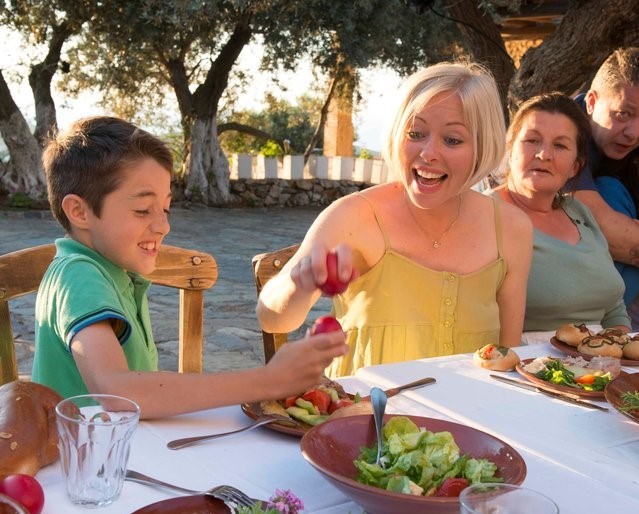
If you are wondering, when is the best time to visit Crete in Greece or one of the Greek islands, the answer is simple and somewhat unexpected: It’s during Greek Easter. Greek Easter is always in spring, the best season to be in Crete (check here why). Nature is at its best, the island is in full bloom, the weather is pleasantly warm and everyone is enthusiastically preparing for the summer season.
This time of year is also ideal to enjoy your Greek holidays, relax and unwind under the Greek sun over a glass of raki but also the best time to explore the villages, the gorges and experience Greek culture and tradition (let alone the food)
Unlike the rest of Europe and the West, Easter time in Greece is far more important and festive compared to Christmas. Easter or “Pascha” in Greek, comes from the term Passover; the week that leads to Easter Sunday is called Holy Week and during Holy Week you will experience authentic traditions each day – a good dose of Greek culture and customs all condensed in one week!
We’ve listed today a few customs that make Easter in Greece particularly special, essentially a cheat sheet for your next Greek Easter visit:
Easter Traditions
Red Eggs & Cracking
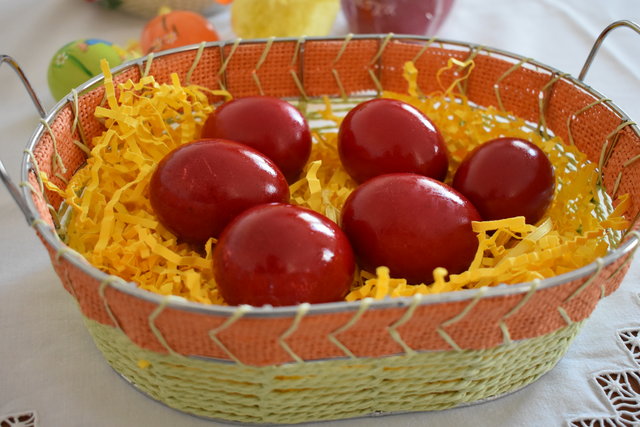
Picture courtesy of Maria Metochianaki
Colorful eggs are part of Easter celebrations in many countries around the world. In Greece, custom has it that eggs are dyed red, a color that symbolizes the blood of Christ. During Holy Week, on Thursday, Greek households dye their eggs red, preparing for Easter Sunday.
On Saturday night, during the traditional Resurrection Dinner just after midnight, families gather around the dinner table, pick their egg and start a cracking competition for the strongest egg on the table! The strongest egg defines the winner who is blessed with good luck!
Tip: So, if you are spending Easter in Greece and you are handed a basket of red eggs, go through the cracking competition before you eat it! Pick the smallest egg, because the smallest is usually the strongest!
Fireworks
When the clock hits midnight on Holy Saturday, the church bells ring announcing the Resurrection of Christ and the sky lights up with fireworks, which symbolize the joy of the resurrection.
Holy Saturday is particularly eventful and festive around Agios Nikolaos Lake. At midnight, the priest announces the Resurrection with the Greek words “Christos Anesti” and the sky fills with fireworks that reflect on the lake’s water. The lights, reflections and wild scenery of the lake are truly magnificent and one of the best things to do in Crete as a visitor. On the other hand, in the village of Kritsa, there’s a loud and festive celebration of fireworks AND dynamites (yes, you read well!) – if you aren’t afraid of big bangs then it’s worth a visit…
Tip: If you are in Agios Nikolaos on Holy Saturday celebrations, the upper side of the lake guarantees the panoramic views!
Epitaph
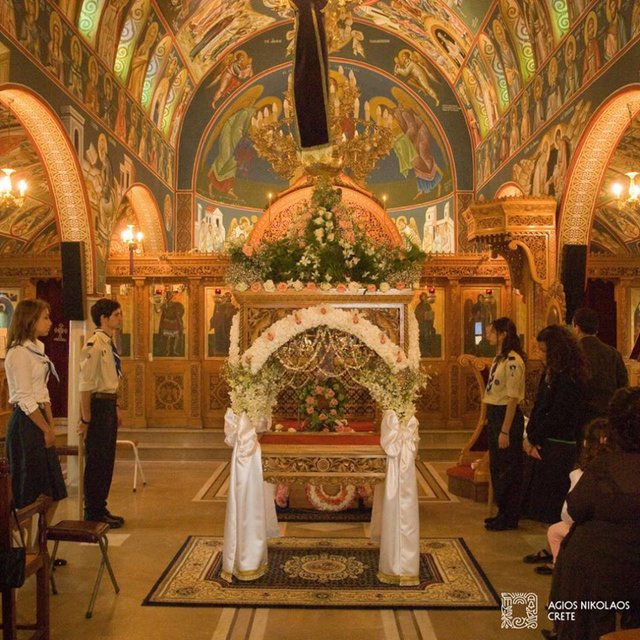
Picture via Agios Nikolaos Crete
Epitaph is essentially the tomb of Christ. Every church has its own epitaph and every Holy Thursday women stay till late to decorate the epitaph with flowers from the fields, preparing it for the body of Jesus. In the evening of Holy Friday tradition has it that people walk around the town following the epitaph, holding candles and chanting hymns.
We encourage you to join this “walk”; it is very spiritual and you will experience Crete like a local!
Lampada
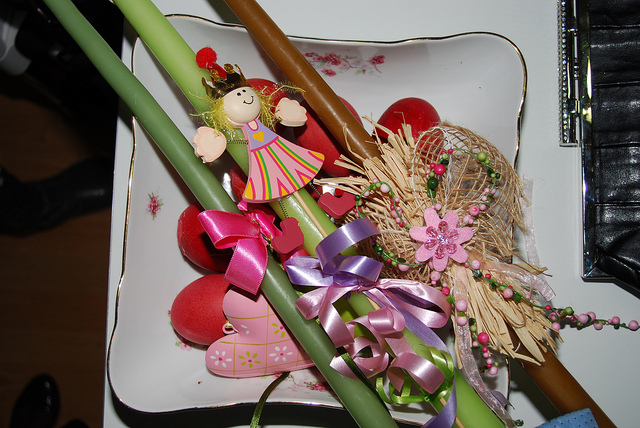
Picture by George M. Groutas via flickr
“Lampadas” are the decorated candles which people hold on Holy Saturday to carry home the Holy light arriving from the Holy Lands of Jerusalem. The holy light comes from Jerusalem and on Saturday midnight, the light spreads all over Greece through beautiful “lampadas”. Lampadas are particularly loved by children who anxiously wait for their godparents to bring them the lampada of the year, as per tradition.
Tip: On Holy Saturday, the night of the resurrection, hold a candle with you and when the Holy Light arrives, light your candle and spread the light to the people behind and around you, like a local!
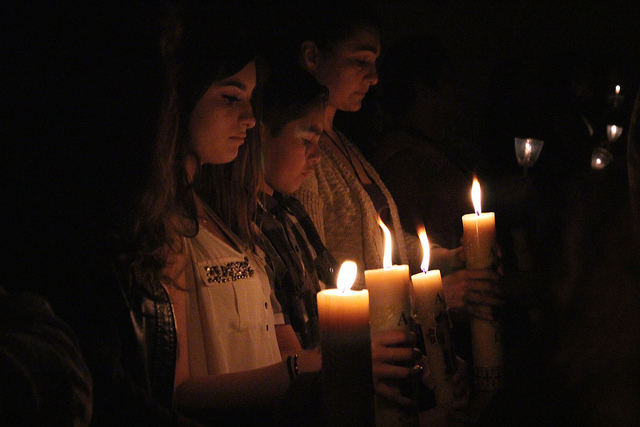
Picture by prayitno via flickr
Food
Tsoureki
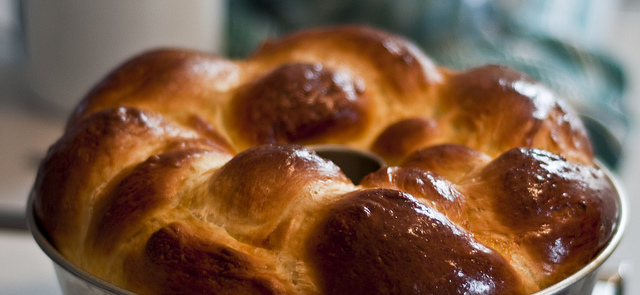
Picture by Michael Himbeault via flickr
Have you ever tried a food which you could eat any time of the day as breakfast, lunch, dinner or snack? If not, you should try tsoureki! Tsoureki is the Greek Easter sweet bread which is prepared traditionally on Holy Thursday along with the egg dying and eaten at the end of the big lent (40 day fasting period) on the Resurrection dinner and Easter Sunday. It is delicious and you can find it in many different versions. A round version with a red egg or a hole in the middle, tsoureki with chocolate, tsoureki filled with chestnut, but the traditional version is the plain tsoureki drizzled with almond flakes.
Tip: Try pairing tsoureki with a slice of Graviera cheese or dip a slice of tsoureki in milk for breakfast. Yum!
Magiritsa
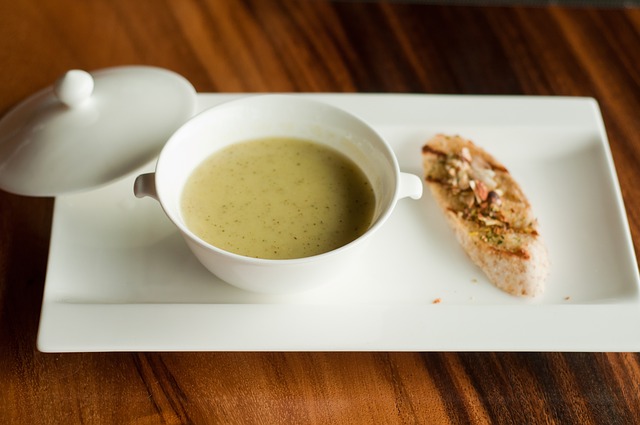
Picture by twk3 via Pixabay
Magiritsa is the main dish of the Resurrection dinner held after midnight on Holy Saturday. It is essentially a lamb offal soup with dill and lemon and it’s meant to heal the stomach after 40 days of fasting before the food extravaganza on Easter Sunday!
If you plan to stay at the Elounda Palm Hotel & Suites taking advantage of our Easter offer you will enjoy the delicious magiritsa prepared by our Chef!
Tip: Don’t ask too many questions what is inside your Magiritsa, just enjoy it with plenty of lemon!
Lamp on the spit
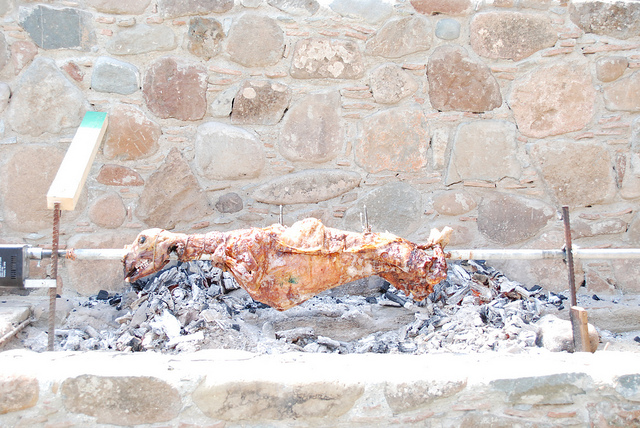
Picture by George M. Groutas via flickr
Easter Sunday starts early, when -traditionally- the men of the house start the lamb roasting preparations alongside a bottle of raki and nibbles on the back yard. Meanwhile, the women of the house take care of the rest of the table in the kitchen, salads, roast potatoes and other nibbles for the family and friends that gather around the Easter table.
Guests of the Elounda Palm this Easter will have the chance to see the lamb preparations and enjoy themselves alongside the pool until the Easter Sunday lunch feast takes over!
Tip: Easter Sunday lunch is the only time of the year you have a good excuse to put yourself in a food coma! If you accompany your meal with raki this will help with digestion, but careful not to mix your raki with other alcoholic drinks in order to avoid a hangover!
Kokoretsi
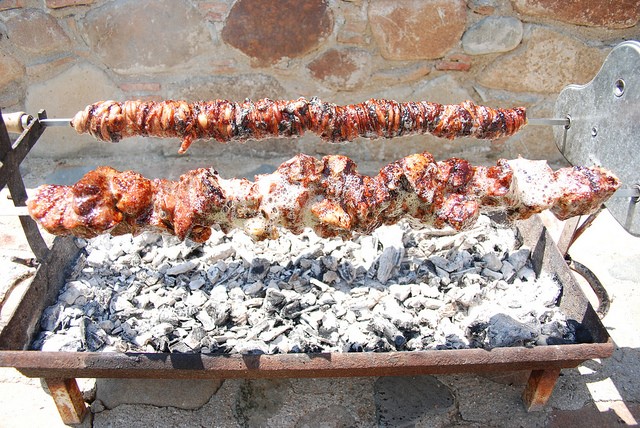
Picture by George M. Groutas via flickr
We are slightly hesitant to deconstruct a “Kokoretsi” for you before you have the chance to try it. It’s an alternative to the typical lamb on the spit made out of offal. The preparation is difficult and requires skills, but with the proper company and good music it can be a fun ritual.
Tip: While kokoretsi is best enjoyed hot and fresh, leftovers are a great raki meze for the next day.
Greek Easter is a festive season for Greeks, the time to celebrate with friends and family after a period of fasting and spiritual concentration.The celebration vary throughout the country -each place holding its own customs and traditions- but a visit during this time of the year will leave you with memories of a lifetime.
This year join us dear friends around the Easter Sunday lunch table of the Elounda Palm Hotel, your home in Crete.
Have you experienced Greek Easter in Elounda?
